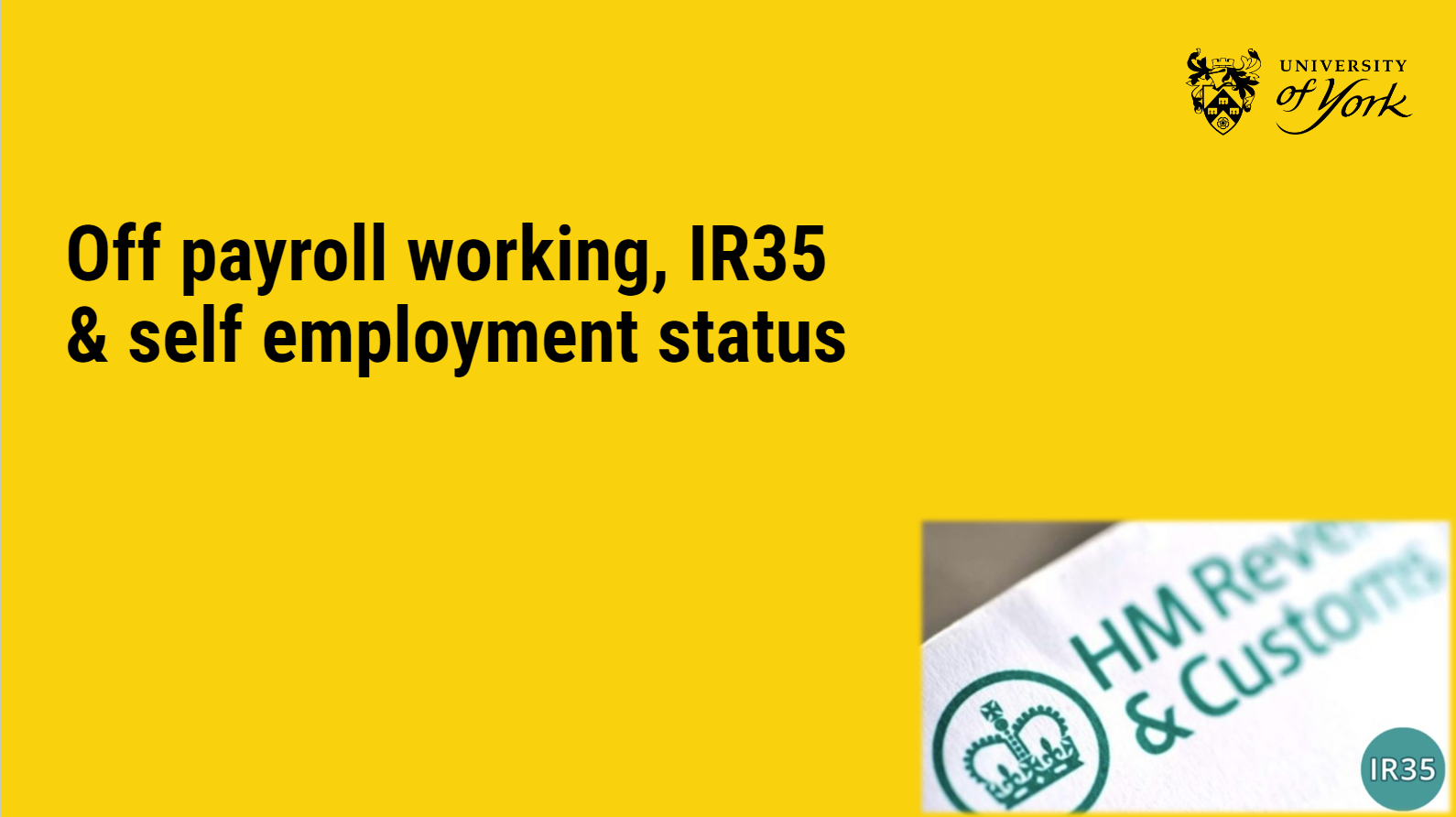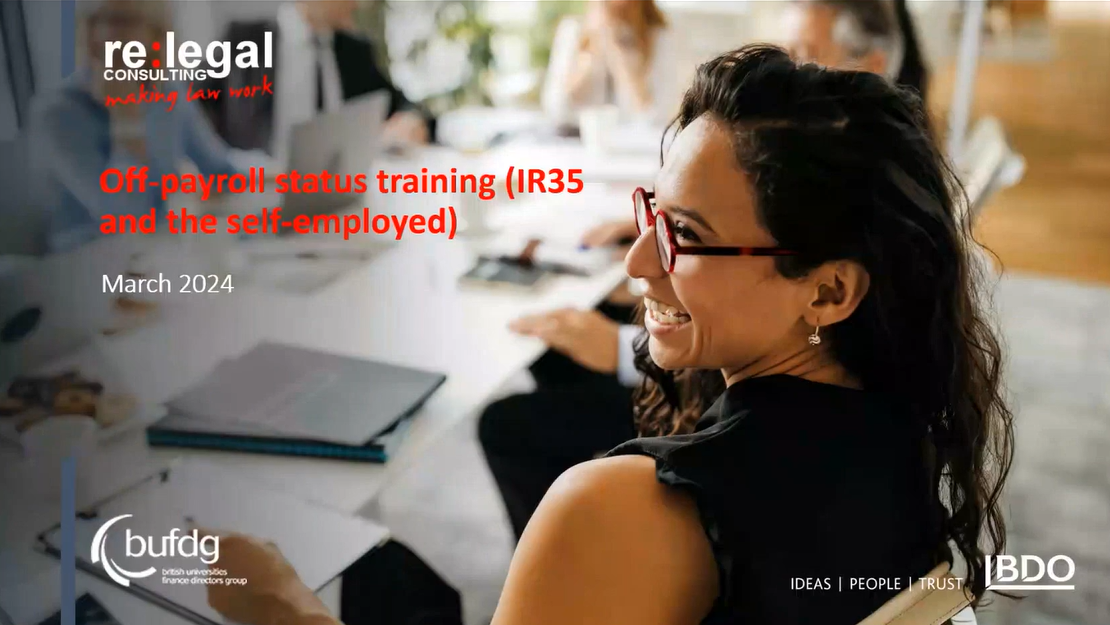Off payroll (IR35) and self employment
Off payroll refers to anyone not paid via the payroll, and IR35 are the ‘rules’ in place along the process.
To learn more about what this means, have a read of these:
If you plan to offer temporary work to someone who works through their own intermediary (for example their own limited company, a partnership or another person) or as a sole trader, the University needs to determine whether HMRC "off-payroll working" rules, employment and tax legislation applies.
These rules make sure that, where an individual would have been an employee if they were providing their services directly, that individual pays broadly the same tax and National Insurance contributions as an employee would.
Who needs to be aware of this?
All employees making employment status decisions, those who are responsible for gathering the information for those decisions, and those that are responsible for the payment to off-payroll workers. Training should typically be completed by hiring/engagement managers, procurement, finance, HR and payroll staff as a minimum.
Employment Status Survey (ESS)
An Employment Status Service (ESS) form (internal to UoY) must be completed by the department planning to use a Personal Service Company or an individual to undertake work on a self-employed basis.
This should be completed by the hiring/engagement manager, not the administrator, as they will have a bigger picture/clearer idea as to what the proposed relationship entails.
Once the form is completed, the Payroll team will complete the Check Employment Status Test (CEST) based on the ESS, which will provide the formal HMRC result.
What do you need to do?
Contact us
Check the contacts section at the bottom of the page for specific details
Heslington Hall
- Reflect upon the nature of the relationship - seek advice from payroll if required
- Refer to legal services for a specific contract for either Agency/Consultancy/Personal Services
- Refer to the procurement team to understand the commercial and operational risks of the engagement
- If the tests are met, the CEST/ESS must be completed by the recipient of the services, in order to determine if off-payroll, employment and tax legislation applies
- Once the form is submitted, payroll will be notified. The CEST tool will be used to determine the outcome
- Payroll will email a confirmation of the outcome - either to put the individual onto the payroll, or to set them up as a supplier
- Follow instructions provided by Payroll in the outcome email
- If the outcome is to set up as a supplier, you will need to also raise a new supplier request, providing details of the checks you've already performed
- The individual and their company then get issued the SDS (Status Determination Statement) and the contract which should have a unique reference number
- The purchase requisition should now be raised, with the contract and reference number directly referenced on the purchase requisition
- An annual review should be done, if the relationship occurs over a reasonable length of time
Appeal process
If the worker disagrees with the result of the status check, they can appeal to the Director of Finance (or their nominated senior manager) by emailing employment-status
- Name
- Company name (if applicable)
- Reasons they believe the determination is incorrect
- Contact information
A response will be issued within 45 days of receiving notification of the appeal.
Supporting resources
Key contacts
If you have a question or need further support, please contact either Procurement or Payroll:
Contact us
Check the contacts section at the bottom of the page for specific details
Heslington Hall

